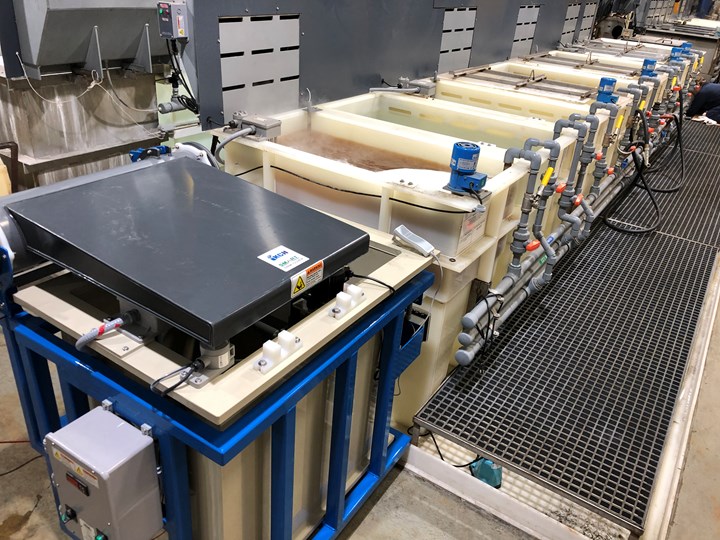Episode 15: The Quest to Make Chrome Safe
In this episode of On the Line, we hear about a new non-aqueous trivalent chromium chemistry.

The quest to replace hexavalent chromium in metal plating has been a topic of discussion for the finishing industry for decades. On one hand, hexavalent chromium provides excellent hardness, wear resistance, corrosion resistance and enhanced adhesion to substrates. On the other, it poses occupational and environmental hazards. Compliance with increasingly stringent regulations has been a continuous struggle for finishing operations and the use of hex chrome continues to be a major concern for the metal finishing community.
In this episode of On the Line, we sit down with Doug Morrison of Trion Coatings LLC of South Bend, Ind., Mauricio Quiroz, chief scientist and co-founder for Trion, and Kyle Hankinson, director of special projects for KCH Surface Finishing to hear about a new non-aqueous trivalent chromium chemistry known as SAFE Chrome. Trion says the solution is designed to provide the finishing industry with safe and environmentally sustainable functional and decorative chrome coatings that match the performance of hexavalent chromium-based solutions.
Related Content
-
Possibilities From Electroplating 3D Printed Plastic Parts
Adding layers of nickel or copper to 3D printed polymer can impart desired properties such as electrical conductivity, EMI shielding, abrasion resistance and improved strength — approaching and even exceeding 3D printed metal, according to RePliForm.
-
Trivalent Chrome Overview
As the finishing industry begins to move away from the use of hexavalent chromium to trivalent chromium, what factors should finishers consider as they make new investments? Mark Schario, chief technology officer for Columbia Chemical offers a helpful overview of this complicated topic.
-
Products Finishing Reveals 2024 Qualifying Top Shops
PF reveals the qualifying shops in its annual Top Shops Benchmarking Survey — a program designed to offer shops insights into their overall performance in the industry.






